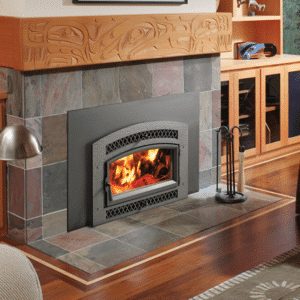
Addressing Black Smoke Emissions from Oil-Burning Furnaces: Causes, Dangers, and Emergency Response
Oil-burning furnaces are a common heating solution in many homes, providing warmth and comfort during the cold months. However, when black, gray, or thick smoke starts emanating from the chimney, exhaust vent, or combustion box, it’s a sign of a serious problem that demands immediate attention. This article delves into the causes of smoke emissions from oil-burning furnaces, the associated dangers, and essential steps for emergency response to protect your home and well-being.
Section 1: Recognizing the Severity of Smoke Emissions
1.1 An Urgent Matter
The emergence of black, gray, or thick smoke from an oil-burning furnace is not to be taken lightly. Regardless of where the smoke is coming from, whether it’s the chimney, exhaust vent, or combustion box, it should be considered an emergency situation.
1.2 Immediate Action Required
The severity of the situation cannot be overstated. If not promptly identified and resolved, the consequences can range from structural fires to explosions. Time is of the essence in addressing this issue to safeguard your home and loved ones.
Section 2: Protecting Yourself in the Face of Danger
2.1 Unseen Threats
Black smoke emitted from an oil furnace may not feel hot and might not irritate your eyes and nose, but it conceals hidden dangers. It contains carbon monoxide and carcinogens, both of which pose serious health risks. Additionally, excessive pressure buildup inside the furnace can lead to doors or fronts blowing open.
2.2 Key Safety Measures
In the event of black smoke emissions from your oil-burning furnace, follow these essential safety measures:
2.2.1 Avoid Front or Door: Keep a safe distance from the front or door of the furnace, as it could potentially blow open due to pressure buildup.
2.2.2 Call for Help: Immediately contact the fire department when confronted with an emergency, including fires, explosions, white vapor clouds, or other hazardous situations.
Section 3: Causes of Smoke Emissions from Oil-Burning Furnaces
3.1 Incomplete Ignition: Puff Back
One common cause of black smoke emissions is incomplete ignition, often referred to as “puff back.” This occurs when oil is pushed into the combustion chamber but is not immediately ignited. The result is a small burst or mini-explosion that produces a puff of black smoke. Puff back is characterized by a leaping flame as the fire travels to scattered oil droplets. In severe cases, the flame may follow the oil out of the furnace, potentially causing a house fire.
3.2 After Fire
Another cause of black smoke emissions is an after fire, which can result from improper burning or an oil leak. During combustion, a small amount of oil may accumulate in the bottom of the combustion chamber. This residual oil can continue to burn even after the furnace shuts off. Without proper control and ventilation, the oxygen in the combustion chamber is rapidly depleted, leading to thick clouds of black smoke. An after fire situation can pose significant dangers.
Section 4: Emergency Response and Mitigation
4.1 Immediate Action
Upon observing black smoke emissions from your oil-burning furnace, take these quick and decisive actions:
4.1.1 Shut Off Electricity: Locate and turn off the electricity supply to the furnace. Most furnaces have an emergency electric shutoff switch near the unit.
4.1.2 Close Off Fuel Supply: Identify and close off the oil supply to the furnace. Typically, there are two shutoff valves—one at the burner and one at the oil tank. Turn off both if it is safe to do so.
4.1.3 Do Not Restart: Under no circumstances should you attempt to restart the furnace without professional inspection and repair.
4.2 Licensed Repairman Assessment
After taking immediate safety precautions, contact a licensed and certified furnace repair professional to assess and rectify the issue. Do not use the furnace until it has been thoroughly inspected and repaired by a qualified technician.
Section 5: Conclusion – Safety First
In conclusion, the emergence of black, gray, or thick smoke from an oil-burning furnace is an alarming occurrence that requires swift and informed action. Recognize the gravity of the situation and prioritize safety. Smoke emissions can result from incomplete ignition (puff back) or after fires, both of which can have serious consequences if not addressed promptly. Protect yourself and your home by following safety measures, shutting off electricity and fuel supply, and seeking immediate professional assistance. Remember, safety should always come first when dealing with furnace emergencies to prevent potential disasters and protect your health and property.
Written by Carlye Jones; Updated December 19, 2018 | Source: https://homeguides.sfgate.com/troubleshoot-black-smoke-oil-furnace-102151.html
